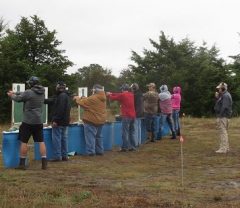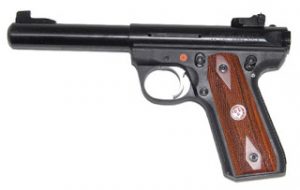I am constantly getting in debates with people about, or reading forum postings about, “This gun is better than that gun, or more accurate”, etc. It is the same as Ford vs Chevy trucks, iPhone vs Android, and all those other things. At least, most of those debates are comparing apples to apples (skip the iPhone reference). If you compare a Ford truck to a Smart car on the basis of cargo room, now you’re getting delusional.
So it is with handguns. Some are purposely made small enough to conceal (hereinafter called “small guns”), while others (“large guns”) are made with no such intention. Large guns include 1911s, “duty guns”, 6-inch revolvers, and other such guns. Small guns include most .380s, a plethora of small 9mms (S&W Shield, Kel-Tec pf9), and even some small .40 and .45 pistols (S&W, Kimber). Since concealed carry guns are a booming market, there are more and more of these on the market. While some are more expensive or higher quality than others, they all share one common characteristic: they are small!
Which brings us back to the debate. Comparing small guns to large guns is not apples to apples. The purpose is different, so the process of shooting them is different. Small guns are not inherently less accurate than large guns, but the shorter sight-radius makes it more difficult for the shooter to be accurate. Small guns often have harder triggers to work (or a longer pull), not as a flaw, but as a safety feature. They have less capacity (are you going to try to conceal a gun with an 18-round magazine?). Small guns are less fun to shoot. If you don’t believe that, try shooting .357 Magnum from a snub-nosed revolver.
Larger guns, like 1911s and duty guns, are great for target shooting and combat. They balance recoil nicely, often have finely tuned triggers, and are very accurate at 25 yards or more. They are fun and rewarding to shoot. Small guns have little role in that world; they are for one purpose only: to save your life in that crisis that may never come.
In a crisis shooting event, the FBI has found that police officers only hit their target 25% of the time, due to stress, adrenaline, and blood pressure changes. If you chose your concealed carry gun because you could hear the click of the trigger reset, think again. If you did not buy a certain gun because the trigger felt gritty, think again. None of those things will matter. Here’s what matters:
- you can conceal it
- you feel it is safe to carry it with a round in the chamber
- it will cycle and fire every single time (good brand)
Even if the trigger feels gritty, when your life is on the line, you will get it pulled. Practice with it enough that you are experienced in pulling and shooting, then buy a larger gun for fun.



